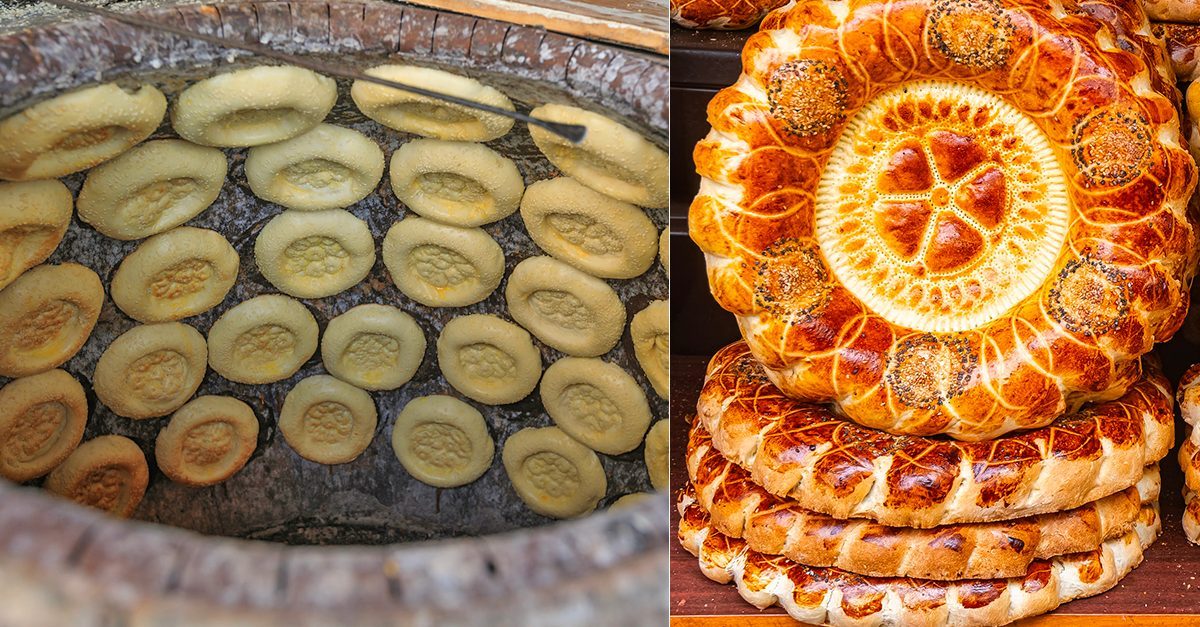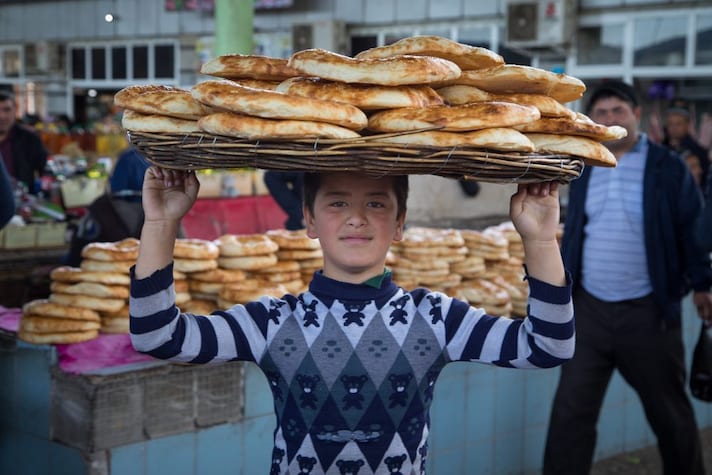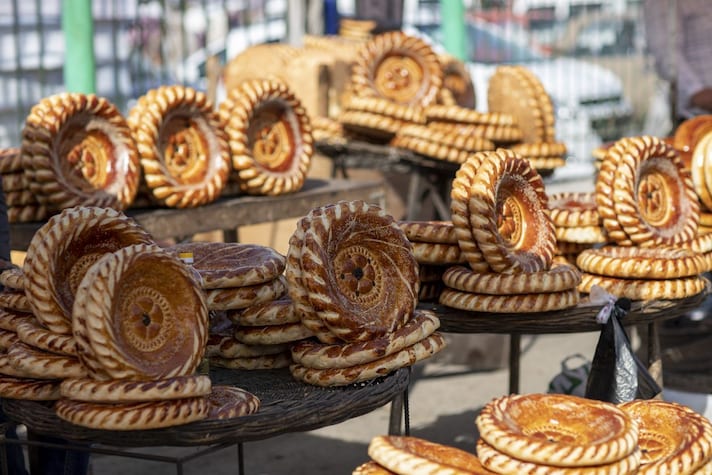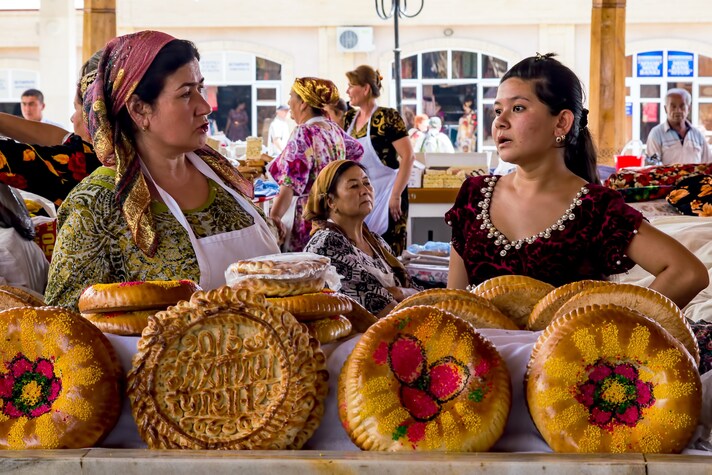What is Samarkand Bread, the World’s Longest-Lived Bread Made Unique by The Air of Its City
Samarkand bread is a product steeped in legend: it is said that the air of the Uzbek city itself makes it so special and that it can be preserved for up to 3 years. Here is how it is made and what is its history.
;Resize,width=742;)
Attached to the walls of the tandyr, the urn-shaped clay oven, with its slow darkening that creates a light contrast between the decorations of the molds and the sesame, Samarkand bread gives the idea of something frozen in time, immutable, perennial. And it couldn't be otherwise, given that it is said to last for as long as three years: an inestimable good, to be revived with a little warm water. Samarkand bread is one of those products cloaked in a mysterious and timeless charm but, at the same time, represents the answer to an immediate need, that of being satiated. Today we tell you all about Samarkand bread, its decorations, its types, but above all the legends that have brought it to us.
Samarkand Bread, Which Lasts Up To Three Years
Samarkand, the "stone fortress", has always been a crossroads of peoples, thanks to its position on the Silk Road: among its many wonders, a place of honor is given to bread. This city in the south-east of Uzbekistan, among the oldest in the world, holds the recipe for a bread that there is called oni non or lepershka, a preparation that someone has tried to "export" but failed.
It is said that the Emir of Bukhara, having fallen in love with the flavor of this bread, called various master bakers in an attempt to replicate the recipe in his city. Despite the professionalism of the bakers, the bread never came out with that specific flavor that had enchanted him: it was useless to set the same doses and import the raw materials from Samarkand itself. In the end, the conclusion was that it was the "air" of Samarkand that made that bread so special, officially decreeing the deep bond between this product and the city where it was born.

But what are the characteristics that make it so special and what is the reason for the deep bond that this bread has with the citizens of Samarkand? Samarkand bread has played and still plays a crucial role in the life of the city's inhabitants: its uniqueness also lies in its ability to keep its "freshness" intact for up to three years, thanks to ancient cooking and conservation methods, handed down from generation to generation. It seems that, once dry, just wetting it brings it back to life.
How to Make Samarkand Bread: A Centuries-Old Rite
The secret of its extraordinary longevity and its unmistakable flavor lies in its simple but strictly local ingredients: flour, pure water, salt and yeast. The dough is a real ritual that follows ancient rhythms, in which each phase, from leavening to modeling, respects strictly traditional times and methods. The dough requires about 30 minutes of hand work to obtain a smooth and homogeneous consistency. Once ready, it must rise for about two hours, covered with a cloth, to allow the dough to double in volume.
After the rising time, the leavened dough is shaped into round shapes, with thicker edges than the center, which helps the bread to adhere better to the walls of the tandyr oven, where it will be "stuck". Before baking, circular patterns are imprinted on the pieces using stamps, the outer parts are folded with a beautiful pattern, and they are enriched with sesame seeds, which serve to give additional aroma. The elegant patterns printed on the surface of the loaves make these creations inimitable.

The bread is brushed with water before being fixed to the hot walls of the tandyr: this is a traditional urn-shaped clay oven, typical of Central Asia, particularly Uzbekistan. In this oven, baking takes place by attaching the loaves of bread to the hot walls of the oven. The high temperature of the tandyr allows for quick and even baking, giving the bread a thick and crunchy crust, a soft interior and a shiny surface, which makes it even more beautiful.
This type of oven is essential for the preparation of bread: it is believed that the use of vertical ovens such as the tandyr derives from the Semitic peoples who settled in the Middle East and Central Asia. Finds of this type of oven date back to 5050 BC.
Variations of Samarkand Bread
There are several varieties of Samarkand bread: each district of the city has its own versions, prepared with special recipes passed down from generation to generation. In general, there are two large subgroups of bread: non- simple (obi-non) and non- festive (patyr).

Among the common variations is the small loaf decorated with sesame, but also the larger one decorated with icing is very much in its own. Then there is the katlama, a variant made of soft puff pastry, often enriched with sour cream or butter, very popular in the Fergana Valley. Jizzali-non is a variant enriched with cracklings, while zogora is made of corn flour.
Among the most beautiful is the kuk-patyr, enriched with different types of local aromatic herbs, depending on the period. Finally the loaf, also used to decorate the table and almost as a souvenir, the lepëška longeva. In addition to these, there are other less known variants, such as the o bi-non tunuk, kulcha and chap-chak.
;Resize,width=767;)


;Resize,width=712;)
